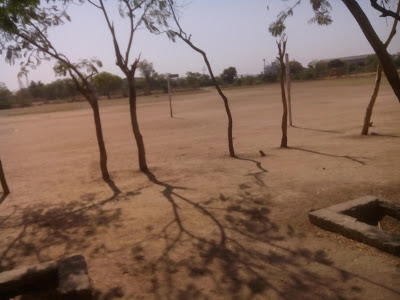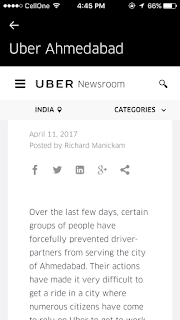History
In late 1970’s and early 1980’s Ronald Reagan and Margaret Thatcher introduced the neo liberal ideology.
1. State should reduce its interventions in the market.
2. Labor and financial markets must be deregulated to open the flow of creative energy of the market.
3. Free trade without limitations of national boundaries must be promoted
By the implementation of these policies, the economy was centered around multinational corporations. In the health policy, the neo liberal ideology influenced very much.
1. A new insurance based health system by transforming national health services.
2. The privatization of health system
Determinants of Health
The place, where a child is born have influence in the life span of that child. If the child is born in India, he/she is expected to live for 63 years.
Socio-economic status (SES) – Health of a person is influenced by income.
Traditionally defined by education, occupation – Improved work satisfaction, poor job environment like mining industries, nuclear factories and income.
Poor neighborhoods are located dis-proportionally and spread near highways, industrial areas, outskirts of cities and toxic environment. Main thing is that the land is cheaper, access to job and the effect of pollution is invisible.
Housing quality determines health– Asbestos sheet houses were built in Tamil nadu during the Tsunami relief. They will sleep outside due to hotter climate inside the house. The rate of childhood Asthma also increased exponentially. In Haiti, the houses built by UN are also congested and without bathroom facility.
Crowding within the family is also a problem for poor people.
Extreme noise exposure lead to ear damage.
Universal health coverage in Brazil, Canada and other countries does not ensure equal chance for poor people to get specialist care as rich people.
Demography is the statistical study of human population. Direct and indirect methods of data collection.
Sociology of health and illness covers sociological pathway (causes of disease and illness).
I came to Ahmadabad ten days back. I am staying near Karnavathi club. I used to go to office everyday morning and come back every night as everyone in corporate world. The bus will drop me in the bus point and I have to walk to the guest house where I am living. I have to cross the road to for taking that way. The situation is that I am running to cross the road everyday. There are no Zebra lines, no signals, no over bridge for pedestrians. I could see an officer in traffic police trying to stand in the middle of the road and relaxing. Because he knows that there is no point in exercising too much.
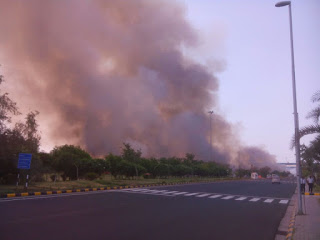 |
| Ahmedabad, Gujarat State, India Development Model in the Last 10 years |
Girls and women often take me as a cover to cross the road. It is hard for them to run behind me to cross it. I used to show stop sign with my hand and help them cross the road. There were more than 5 times where a car or bike trying to take its chance to hit me. Yesterday a lady was crossing the road and even though I showed the stop sign, vehicles were not even slowing down. Hence I had to run and she was unable to. She got stick in the middle of the road and then I came back and helped her to cross the road. I have a doubt. Is it a crime to be a pedestrian in Ahmadabad? Is it a crime that I do not have bike or a car? Is it a crime that ordinary people do not protest against this injustice?
 |
| no Zebra lines, no signals, no over bridge for pedestrians but only smoke |
After I cross the road, I have to walk about half a kilometer to reach the guest house. In the night, it is hard to see the lights of the vehicle not due to darkness but of the dust. The road is not in a good shape. I am not sure that whether I can call that as road. As the vehicle pass the road, the dust just goes up and settles down in our noses and lungs. I tried to take pictures to show how dusty the road is. However I couldn’t due to dust in camera.
According to World Health Organisation, Ahmadabad air is the fifth most polluted in India with PM 2.5 concentration of 100 micrograms and it has highest level of PM 2.5 concentration among Gujarat cities. I will say this kind of air pollution is a poisons inter-generational killer. It will create Asthma for the children or chronic obstructive pulmonary disease (COPD) or other respiratory tract infections. According to Central Pollution Control Board (CPCB) daily air quality index (AQI) list, Ahmadabad is the second worst city in India with an AQI score of 304.
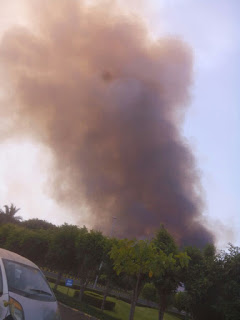 |
| Smoke coming out in road |
We have to think is this what development really means? Is it just about making big huge nice roads without any safety measures? Is it just developing roads in high ways and leave other pocket road without proper repairing and maintenance? Is it about creating more and more huge big roads or is it about improving quality of life of individuals.
Life in Ahmadabad, Gujarat: Truth and Hype
I have been seeing lots of posts on Gujarat such as Swach Gujarat and developed Gujarat etc. When I lived in Kerala, ya! the God’s Own country, I thought maybe these claims are true. Because I have not seen Gujarat nor Google images gave me any other thought provoking pictures. I been staying in Gujarat for the last 1 year and working in villages such as Sanand, Bol, Anniyari etc.
I could see how irrelevant these claims are and how worse is the condition of Gujarat in providing quality of life of individuals. Most of the children in villages are malnourished and need urgent attention, the condition of schools are very bad and most of them do not have gender segregated toilet and some do not even have one general toilet.
I went for recruitment in ITI’s in Surat, Rajkot etc. The poor condition of toilets, inadequacy of qualified teachers, lower educational standard of students etc. are common in these colleges. Most Gujarati believe that they have business blood, so even though they cannot study well, they will do business and make money. I am not against the idea a of making money however if young people fail in their business, they will not have any backups to lean on. I have not seen people in Gujarat who are so selfless in nature yet (as per me) whom you meet every other day in Kerala or Uttarakhand. As City life is gulping the villagers too, they are also rooted in the idea of making money.
Lifestyle and food is very costly in Ahmadabad. I stay in Vastrapur which is a very posh area. I will give you an idea of the price of food here. One Chicken biriyani costs 250 Rs. Yea! Believe it or not. I can eat a chicken biriyani for 70 Rs in Kerala with better taste and better quality than of Gujarat.
About working culture: My bus comes in the morning 7:15 AM and I have to be in the bus stop 5 minutes before that. It takes me 45 minutes to reach the company. After a short breakfast (Don’t ask what it is), the work starts at 8:30 AM and Ends at 5:00 PM. The bus leaves the company at 5:30 PM. The bus used to leave at 5:00 PM when I joined the company. The increased the timing for 10 minutes after 3 months, 5 minutes more after 3 months, 10 minutes after 6 months and now it is 5: 30 PM. I usually reach the location around 6:30 PM with less traffic and if there is more traffic, it will extend to around 7 PM. More than that all Saturdays are working days, only 8 holidays for an year, 18 total leaves for the first year of probation. some people have to stay for over time where they will not get additional amount. Basically it’s a free service to the company.
My roommate is working in IT sector. He goes around 10 AM and comes back at 8 PM or so and do work till 2 PM. Others I am not sure when they are coming back. Hence no comments. They get 25K to 50K range salary. One guy I met work on Sundays and overtime also but gets a fixed salary. You may think that these things are normal everywhere in India. It may be. I am sharing what I have experienced and what I saw.
Accommodation: If you are looking for a single BHK, a 2 BHK, a 3 BHK in standard rate as per other cities, forget it. The owners gave the houses to brokers who are basically managers of the property. Usually they will ask one rent, one month advance and one brokerage. Some asks two months advance. The broker won’t even talk to you if you negotiate more and more. You may get unfurnished flats or if you are lucky semi furnished, under normal charge. Most urban citizens are money minded and selfish. One of my friend who is from Rajkot mentioned that money minded people stay in Ahmadabad only and they have a saying in Rajkot about people from Ahmadabad that they are not trustworthy.
Uber, Ola Strike in Ahmadabad, Gujarat For Last 3 Days
Uber has mentioned a notice in the Uber app about the strike however Ola has not announced anything regarding this.
Notice in Uber App
“We’re facing external disruptions in our operations today which may affect your Uber experience. We are working hard to bring more cars on the road at the earliest and to keep the city moving.”
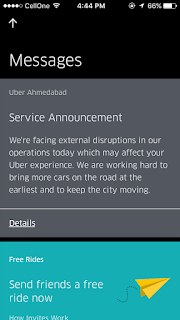 |
| Uber Notice |
Uber Newsroom published a post on this. The screenshot is below.
I have been trying to book a cab via Uber and Ola for multiple times. Following are error messages appearing on the screen
Error Message in Uber
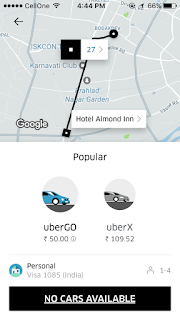 |
| Screenshot |
Error Message in Ola
 |
| Screenshot |
It is clear that no cabs are there in the road and both the companies are not sure whether strike will be over in the coming days.
What are the Reasons for Strike?
Surcharge in Uber and Ola
One Single Rate Ruining Drivers
Update 15/4/17: Strike is Over
Gujarat Village Life – Case Study of Juda and Jambuthal
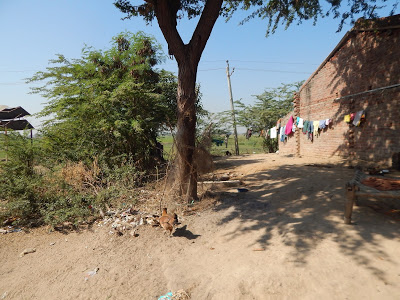 |
| Life in villages in India: Case Study of Juda and Jambuthal, Sanand, Ahmedabad, Gujarat |
8.1. Access to medical facility
There is only one private doctor in the village and he roam around every day in his bike. He gives medicines and takes around ninety rupees – one twenty per visit. The nearby PHC is in Sanand which is 12 KM away from the village. Typhoid, Cough, Fever, Malaria are common diseases in Jambuthal village. If they are in a condition to be admitted in the hospital, they hire private vehicle and the vehicle cost is about three hundred to five hundred rupees. Overall they had to spend from five hundred to fifteen hundred rupees forgoing to hospital.
8.2. Access to Education
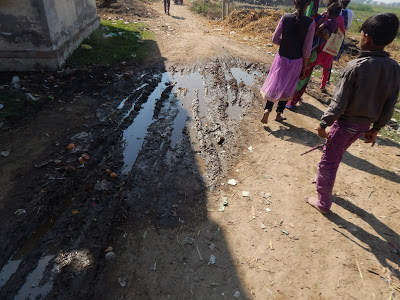 |
| Life in villages in India: Case Study of Juda and Jambuthal, Sanand, Ahmedabad, Gujarat |
There is government school in both the villages which have standards up to 7th. Usually 80% children in the village study up to 7th standard. To study from 8th standard onwards, children have to go to either Sanand schools or Vada where hostel is available. Hence 80% girls and 60% boys drops out in 8th standard. Some children said, “Maja Nathi Avati”. They didn’t enjoy the school. Hence they drops out and do small jobs in farm. The aspirations of the girls get limited to become an Anganvadi worker or a primary school teacher.
8.3. Access to Government services
Most of the villagers do not know the services provided by Anganvadi. They also do not know about what kind of foods are provided, who are beneficiaries and how they can obtain it? In Jambuthal, villagers have seen Anganvadi worker when she come to houses to collect some information and the Anganvadi opens every day. However in Juda, Anganvadi is always closed and villagers have rarely seen Anganvadi worker. Only primary and secondary schools are there and dropout rate is high among children.
8.4. Issues in the villages
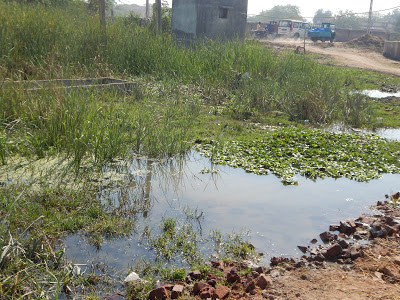 |
| Life in villages in India: Case Study of Juda and Jambuthal, Sanand, Ahmedabad, Gujarat |
I asked them what the main issues in the villages are. The issues are water, open defecation and dirty road. The water in the village has high level of TDS and is not drinkable. So they had to store the pipe water provided by the government when it comes at 8-11am in the morning. Sometimes the water flow even stops at 10 am and there won’t be enough water to take bath. From one pipe, 5-6 households take water. Water that comes in pipe is clean and good taste [I drank the water but I felt distaste]. There is no toilet in the households and the women had to wake up around 4 am. The road in the village gets dingy in rainy season. There are canals in the village for the outflow of excess water.
8.5. Source of Income
Main sources of income in villages are agriculture, daily labour, small shops and dairy farming. Numerous famers have 5 – 6 viga land where they grow paddy and rice. When the crops are growing, they go for daily labour where they get two hundred rupees per day. Usually head of the households goes for daily labour and others take care of household work and farming. Most of the villagers have 2 to 5 milking animals including cows and buffaloes. 70% of the collected milk is given to private parties and whatever left is used to make tea. Private parties do not give adequate money according to the amount of milk given.
8.6. Major expenditures
Villagers spend money for transportation, expenses related to dairy farming, hospital expenses, buying tobacco products, etc. Numerous houses have colour TV and each household has at least one mobile phone.
8.7. Food choices
Villagers usually eat Sabji, rotti, Kichdi and sometimes they make chaval and daal. They don’t drink milk and with the little amount of milk they have, they make tea and all the family members share it. They like to likes Brinjal, rotti, Kichdi, bajiya and Paav Baji.
There is a need to have considerable efforts from the government departments to take up certain issues faced by the community and resolve them by the allocation of adequate resources. These initiatives can be strengthened by connecting to the society and the community for building more rapport and trust. This will enable villagers to interact with the team to share their issues. Improving understanding about multiple dimensions of a problem is one thing need to be is considered. Malnutrition is rampant among the children in Sanand and nearby villages.
Giving either complementary food, or awareness do limited impact. There can be many reasons for malnutrition including the lack of interest in family members to take care the children, parents goes for labor, lack of adequate food, no access to government medical facilities, lack of money and health problems of children such as diarrhea, bronchitis, stomach infections etc. Sustainable initiatives need to be taken up or the existing initiatives need to be modified to suit the need of the community and their future. This can be done through proper research, including review of literature, home visits, field visits, discussions and interviews with villagers, etc.
Land Acquisition and Development in Gujarat
Majority of the farmers were illiterate and needed help from someone else for creating bank accounts, processing transactions etc. Farmers who lost their sole livelihood had to find other ways of engagements. Many started small shops that sells pan, tobacco products, some started mobile repairing shops but majority went on superfluous living as they were getting enough interest from their savings. Majority of the men are sitting idle at home.
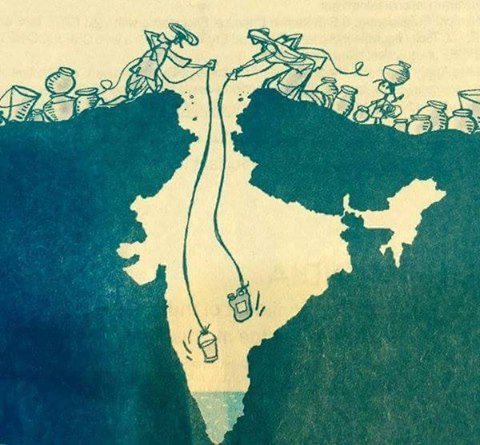 |
| Major drought in India |
“Our village has been facing major drought over so many years. We don’t get clean drinking water. We are getting water from a nearby bore well that is 2 KM away from home. The water from bore well is available till March end. After that the well get dried up and we had to bring tankers to get water. 3 – 4 years back we used to get water even in April. But now days it is very hard to get water. I had to carry the water in my head all the way from bore well. My 9 year old daughter also helps me in carrying water. – Jagruti Ben, Telav Village.”
“I was living in Sanand for 22 years. I have lost my husband and have a daughter. My ancestors were also lived and died there. The only asset we had was five bighas [0.8 hectare] of land in Sanand village where we did paddy and other crops for daily bread. One day Government issued a notice to sell the land to them. We went and asked the officers about the details. They told us that Tata Nano plant is coming to Sanand. The land will be given to Tata Motors plant. They said I will get good money. The bigger landlords had to sell only a portion of their lands. The irrigation channel to my fields came only through those lands. Even if I had retained my land, there would have been no way to get water. The upper-caste men in the village were the main brokers for the government. They forced all of us to sell our lands. I got money but I did not want to sell it” – Chakuba Ben, Sanand.”
“I was living in Sanand and currently living in Viramgam. I sold about 12 bighas of land to Tata Motors. I got good money for it and I did not want to sell it. Now I am selling belts in Ahmedabad for livelihood. I do not have any interest in doing this but I have to do something, right?. I sell 4-5 belts per day and earn approximately Rs. 500 per day. That’s enough for me and wife. – Rajesh bhai”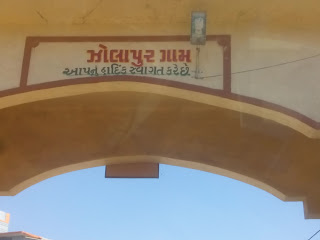
If we categorize people, who were living in Sanand and nearby areas as,
- People who had large share of land
- People who had small share of land
- People who had no land
The first category sold some of the portions and received huge sum of money above the market value. Rest of the land is used for farming and able to cultivate. The second category had to sell their land completely and had to move out from their land to other places and find out other options of livelihood. Third category was either daily laborers or who did not have patta for the land they are residing.
The major issues as said by villagers were influence of bigger landlords over smaller ones to sell their land, the compulsion from Government, the higher price for the land offered by the government, intrusion of upper caste men who were acting as brokers of government, etc.
People who had small share of land had to move out from their land and find livelihood and home somewhere else. The social and psychological impacts of such displacements need to be studied more deeply.
Village Life in India – Why Gujarat Local Governance Fails?
There were 4 women for discussion and major issues came out from the discussion. Two of them have studied up to 8th standard and others have not gone to school. It was mentioned that girls are send to school till 8th standard and after that they get married off. There are no girls in that cluster who have gone to study in 9th standard. The age of girls to get married is 18 and for boys it is 19 or 20.
Read More: Life in India: Case Study of villages Sanand, Ahmedabad, Gujarat
Srinagar cluster
There are about 100 houses in Srinagar cluster and most of them were pacca houses. Majority of the families are BPL and have ration card and Aadhar card. The ration shop is 2 Km away and in monsoon time, it is hard to go to ration shop. There was huge dearth of water and they had to wait for water tanker to come.
There were no toilets in that cluster and they said that the Sarpanch have taken estimate to build toilets but no actions are made yet. They said they wanted to build toilets but have no money to do so. The women mentioned that they had to wake up very early for this and in monsoon season, it gets very difficult to go.
Issues in Governance
The Anganwadi opens at 9 AM and closes at 2 PM. However when I was there, even though it was a working day, Anganwadi was closed.
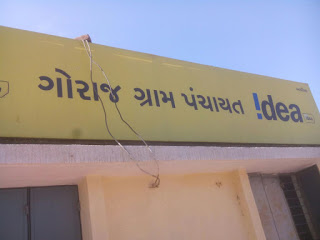 There are no private or government doctors in that cluster and no medical shop. They had to travel to Sanand which is 11 KM far from the cluster to see a doctor. The patients had to walk about 2 KM to the main road and then take auto from there. A round trip will cost around 50 rupees. Major diseases villagers are having are fever, throat issues, etc. Tobacco use is rampant among men and women.
There are no private or government doctors in that cluster and no medical shop. They had to travel to Sanand which is 11 KM far from the cluster to see a doctor. The patients had to walk about 2 KM to the main road and then take auto from there. A round trip will cost around 50 rupees. Major diseases villagers are having are fever, throat issues, etc. Tobacco use is rampant among men and women.
Visit to Goraj Grama Panchayat gave another insight about the existing panchayath system in the village. I reached thereby 10 AM and found the panchayath office was closed. A discussion was conducted two villagers about the current situation. They mentioned that the Panchayath office never opens and people usually go to the house of the Sarpanch to say things.
Read More: Ahmedabad, Gujarat State, India Development Model in the Last 10 years
Conclusion
There is a strong need for a social audit and to find out such gaps in the system. People participation is essential in order to bring these kinds of issues to the main stream and bring more accountability and transparency. The media never brings such governance issues to the main stream and kept on projecting the blurred news that middle class and upper class people. More parallel socially responsible media needs to be developed and promoted. How far one can go watching news that popular media decides and attach an agenda. Civil society needs to be cautioned about these practices and strong actions needs to be taken to eradicate them.
 |
| Milton Friedman Quote |
